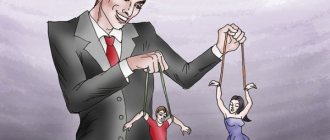Human civilization is a product of creativity, so creative individuals are always in the spotlight. Not only philosophers and psychologists, but also people far from philosophizing thought about who all these creators of masterpieces and talented scientists are, and how they differ from ordinary people. Maybe these are geniuses endowed with a divine gift, or madmen whose brains work with serious deviations? Or perhaps they are ordinary people, and the ability to create is available to everyone?
Despite serious research in the field of psychology of creativity that was carried out throughout the 20th century, there is no clear answer to these questions. But I will try to introduce you to the most common approach to understanding the essence of a creative personality.
Creative people – who are they?
When it comes to people involved in creative work, people usually immediately think of artists, musicians, poets, writers, and less often of scientists. And since these types of activities, due to specific abilities, are not available to everyone, it seems that creativity is some kind of unique gift.
But is it? Try to answer the question yourself: is creativity possible in other types of activities? For example, in pedagogy. Can't a teacher be creative? And the cook? What about the manager, engineer, plumber? Agree that creativity is possible in a wide variety of activities, and it is accessible to everyone. The question is: will everyone take advantage of the opportunity to be a creative person? To understand this, it is worth understanding what creativity is.
Psychological characteristics of creativity
In psychology, creative activity is defined very simply. This is the creation of something new: paintings, music, scientific theories, buildings, mechanisms, culinary recipes, teaching methods, methods of activity, etc. That is, creativity is not a special activity, but its form or level. There are reproductive activities - replication, performing operations according to a model learned by a person during the learning process. And if a person invents something of his own, does it in a new way, then this is already creativity.
Yes, there is artistic creativity associated with specific types of activities that are united under the general concept of “art.” But a musician can also play in strict accordance with a score written by a completely different person - the composer. And the painter can masterfully make copies of paintings. And this is not considered creativity.
But, being possible in any field of activity, creativity requires special qualities and abilities from a person. First of all, these abilities are associated with the cognitive sphere, especially with thinking.
Cognitive sphere of a creative personality
The question of the uniqueness of creative thinking has been of interest to psychologists and philosophers for a long time. But only in the 20th century did they begin to study it seriously. This was due to society's urgent need for creative individuals. Such a need has always existed, but only by the beginning of the last century did society realize that creativity can be effectively used not only in the field of art and science, but also in all other areas of life, including marketing, the creation of new goods and services, and in management etc.
The result of this increased interest was the development of the psychology of creativity and the development of the theory of creative thinking. Thanks to the research of such scientists as J. Guilford, E. de Bono, G. Altshuller, S. Mednik, T. Buzan, Y. Ponomarev and others, the main characteristics of this unusual type of thinking were identified.
- Divergent character. From the point of view of J. Guilford, divergence (direction in different directions) is the main sign of creative thinking. This distinguishes it from convergent, unidirectional logical thinking.
- Imagery. Creative thought is born in the form of an image, as A. Einstein drew attention to. Creative ideas are put into words only in the process of developing and communicating them to other people. Therefore, creativity is most clearly manifested in the field of art, which operates with images.
- Associativity. Associations are connections that arise in the brain between different elements or blocks of information. They help to connect to thinking the most diverse areas of our experience, knowledge, and ideas. The more such associations arise, the more interesting and original thoughts are born.
- Spontaneous activity of the imagination. A creative person not only thinks in images, they are born in his brain spontaneously, without much effort, thanks to his developed imagination.
In addition to special thinking, figurative memory plays an important role in the cognitive sphere of a creative person, helping to retain a lot of useful information, and the ability to focus on one’s activities. Well-controlled, developed attention, combined with imagination, allows creative people to notice the unusual, surprising in the world, something that others do not see.
The role of the volitional sphere
Along with the concept of “creative personality,” the term “creative” is often used. This word itself comes from the English noun creativity - creativity, creative talent. Despite the obvious similarity of these two concepts, there is a difference between them. Creatives are people who are creative, active, and not just endowed with the ability to create.
For people, even with high creative potential, such activity is not always typical. Often the creative process occurs at the level of consciousness, and its results are not always realized in practice. So you can come up with an original, fascinating plot, but you will never write a book. Lying on the couch, you can develop a project for your own business, but never implement it. And if you knew how many brilliant ideas, inventions and artistic masterpieces remained “on the couch”!
To become a creative, active person, creative thinking alone is not enough; you also need strong-willed qualities. After all, you need to develop a brilliant idea, show persistence in proving it, high efficiency in its implementation, not be afraid of difficulties, not give up in the face of failures and be ready for criticism, ill-wishers and envious people. Will in the creative process often plays an even greater role than ability, level of creativity and intelligence.
Area of interest
How are new ideas born and new solutions to complex problems found? In fact, our brain cannot come up with anything completely new; for example, we cannot imagine something that we have never seen if there is no description of it. Creativity is a combinatorial activity, that is, the transformation and combination of elements of previous experience, knowledge, ideas, etc. stored in memory. The information stored in our memory is a building material, and the more it is and the more diverse it is, the better the conditions for creativity .
For a creative person, not only the volume, but also the variety of knowledge is important. This allows you to connect them to solve a variety of problems. And if associative thinking is also well developed, then combining information creates almost unlimited opportunities for creating new things. Thus, creatives are distinguished not only by creative abilities, but also by diverse interests and erudition.
Now the time has come when it would seem that there is no longer any need to remember and store large amounts of information. After all, there are colossal Internet databases where you can find everything. Yes, but they are located outside of our brain, which means they do not participate in the process of creativity, which is largely spontaneous and unconscious. This means that erudition and diverse interests have not lost their importance. Unless, of course, you want to be a creative person.
Unconscious beginning in creativity
Creative thinkers are distinguished from people who can only absorb knowledge and perform habitual, orderly work by the richness, subtlety and depth of their inner experience. A highly developed emotional sphere helps such people turn to subconscious images in difficult situations and receive solutions to their problems from them.
One day, a priest appeared to him in a dream and explained that what he had found were shards of a cylindrical vessel and that in order for them to be read, it was necessary to fold them in the correct way. In the morning, the professor put the shards together, as the priest told him, and was able to read the inscription.
Niels Bohr, while working on the structure of the atomic nucleus, saw in a dream that he was in the sun, and all the planets were attached to the sun by threads on which they rotated. This image inspired the great Danish scientist to create the planetary theory of the atom.
In a dream, the Italian composer Tartini offered to play his violin for the devil. To his amazement, the devil played a delightful melody, which Tartini immediately wrote down when he woke up, and called his sonata “The Devil's Trill.”
It is known that Franz Schubert left music paper and a pencil near his bed at night in order to write down the melodies that appeared to him in his dreams. G. Rossini also wrote the overture to his opera “The Silk Staircase” in a dream.
Elvis Howe, the inventor of the sewing machine, struggled for a long time with the task of connecting needle, thread and fabric. He fell asleep, exhausted by unsuccessful attempts to solve his problem, and in his sleep he dreamed that he was captured by cannibals, tied up and placed in a large cauldron hanging over a fire that was about to burst into flames.
He suddenly realized that he would be eaten if he did not figure out the secret of the sewing machine, and while the cannibals danced on his bed, he imagined that he was being hunted by a group of renegade creatures who had entered into an alliance with fire. While the ogres danced around him, he took a closer look at their spears, which had holes in the sharp ends. And then it dawned on the inventor that he needed to make a hole in the free end of the needle, and then the machine would work. And that's what he did.
Mendeleev also dreamed of a periodic table of elements.
Very often, psychologists associate problem solving and the search for creative solutions with bisociation. If an ordinary association unites only ideas that are at the same level (in the matrix of thought), then bisociation unites different matrices, that is, ultimately, it connects different levels of a person’s existence. Thus, the discoveries of the French scientist L. Pasteur were based on a combination of ideas from different fields of knowledge. The mechanism of grape fermentation led him to unravel the mechanism of fleshy rot.
German physicist F.A. Kekule discovered the formula for the benzene ring when he dreamed of a snake biting its own tail.
These two images - the snake biting its own tail and the carbon ring - refer to two different areas of life. Their rapprochement made possible the birth of a new scientific idea. This became possible due to the fact that several streams of information are simultaneously processed in the subconscious, at the intersection of which a creative decision is made.
Biological and social in the structure of a creative personality
The debate about what determines the ability to be creative—innate characteristics or the social environment—has not subsided to this day. And this is not simple curiosity. After all, if the biological factor is decisive, then creative people are truly chosen, and education does not play a significant role. And if the social factor comes first, then every person at any age can develop creative abilities, the main thing is that the conditions are suitable.
I like the second point of view better, but I cannot help but recognize the obvious connection between creativity and the innate, genetically determined characteristics of the functioning of the brain and the body as a whole.
Biological preconditions for creativity
Research into the biological characteristics of creative individuals was carried out by serious scientists and research teams. Higher nervous activity, brain biochemistry, metabolism, and much more were studied. Based on these studies, the following biological features of creatives were identified:
- The uniqueness of brain activity, which is expressed in the predominant activity of the right hemisphere, which is responsible for imaginative thinking. True, his increased activity is typical precisely for periods of creative upsurge.
- The production by brain cells of an increased amount of certain substances that improve performance, increase the tone of the nervous system, stimulate memory, attention, etc. For example, these include the hormones acetylcholine, glutamate, dopamine.
- Increased levels of uric acid in the body, the effect of which is similar to known stimulants of mental activity, such as caffeine.
- Features of temperament. The mobility and sensitivity of the nervous system, which provides creative individuals with sensitivity to external stimuli, the ability to quickly switch attention and flexibility of thinking. On the other hand, this same feature causes frequent mood swings, increased emotional excitability and, as a consequence, the danger of professional burnout.
These biological characteristics of creatives also have a downside. They not only provide high creative activity and performance, but also lead to the fact that a person has poor control over his activities, forgets about sleep, rest, and sometimes even food. Therefore, creative individuals often suffer from mental and physical overload and increased emotionality. Creatives are also characterized by various illnesses that are not directly related to creativity, because, absorbed in the creative process, these people often do not pay attention to their physical condition.
Social factors
And yet it is impossible to say unequivocally that the ability to create is biologically given. Moreover, changes in the body of creatives may not be the cause, but a consequence of increased creative activity. Except, of course, for innate temperamental traits.
The social environment and the influence of society play no less, and perhaps even a greater role in the formation of creativity. First of all, we are talking about education, but we will not dwell on the education of a creative personality, since this is a topic for a separate discussion. Most children are born with a clearly expressed need for creativity, which they satisfy even despite the prohibitions of society. For example, they color the wallpaper with a felt-tip pen, trim the cat's hair, or take toys apart to find out how they work. But whether this need will continue, whether the children’s abilities will be developed, depends on their parents, educators, and teachers.
But for adults, the social environment is also important. Creativity is generally social; it requires evaluation, support from society, or at least criticism. And in oblivion, in the absence of the attention of others, the need for creativity and the desire to develop one’s abilities quickly fade away. It is not without reason that various types of creativity have recently become so widespread, and not only the completely democratic arts and crafts. The Internet has given everyone the opportunity to try themselves as artists, sculptors, writers, creators of worlds and crazy ideas. After all, now we can share the results of our creativity with a huge number of people, even those living thousands of kilometers away from us.
Video
Self-development
You are a creator. Your life is creativity. Your purpose is to create something new! Perhaps no one told you about this. Now it's time to find out who you really are. Just as a drop of water in its structure expresses the entire world ocean, so a person can express in himself all the qualities of the Supreme Creator. He is the most developed creative personality. You are just a student who learns the basics of creativity, living an infinite number of lives. Through the disclosure of your creative potential, you get to know yourself and at the same time you get to know him. It turns out that you recognize it in yourself.
Psychological portrait of a creative personality
Summing up this difficult topic, I want to summarize everything that has been said and present a unique psychological portrait of a creative personality. Of course, creatives are all different and differ from each other more than the average person, but they still have common features:
- The need for creativity, which largely controls the life of a creative person: choice of profession, hobby, circle of friends, etc. This need is paramount and is often satisfied even to the detriment of other vital needs.
- The desire for self-realization. This is another, no less significant need that encourages a creative person to look for himself in different types of activities, and, having found an area of application of his talent, to devote all his time to what he loves.
- High activity and performance. This activity is related to the area of creativity and is not always social, since creative individuals often do not adapt well to society.
- A special type of thinking allows a creative to see the unusual in the ordinary, find non-standard solutions and get to the goal in their own, original ways. This cannot but cause bewilderment among others, which is why creative individuals are often considered eccentrics.
- A high level of imagination and creative thinking make creatives desirable members of any team, but they also prevent society from accepting a creative person, causing a feeling of alienation in relation to the “upstart”, “strange person”, “the smartest”, etc.
- Persistence, pursuit of goals and passion for creativity allow a creative person to develop special abilities in various types of activities and become a Master. And this also makes him stand out from the crowd.
It seems that creativity is opposed to a society, the majority of whose members do not strive for creative activity. Until recently this was very noticeable. But the 20th century, with its focus on dynamic and creative development of literally all areas of life, forced a change in attitude towards creatives. Not only have they become necessary in any team, but there are also significantly more creative individuals themselves than there were 100 or even 30 years ago.
Activity hours
Creators often have unconventional daily routines . For example, Vladimir Nabokov’s communication with his muse usually took place early in the morning. He woke up before 6 am and sat down to work. N. M. Karamzin had a fairly traditional regime. He got up early in the morning and always went for a morning walk. After that, he had breakfast and went to the office. It was strictly forbidden to disturb him during these hours, with the exception of his wife and children.
Some creative individuals work at night and rest during the day. Often inspiration comes unexpectedly, then they drop everything and immerse themselves in work. Poets sometimes wake up at night and grab a pen to write down the lines formed in a dream. Someone works “binge” for several weeks, and then no ideas come to mind for months. Creative crises also happen.
Creative activity
To create, a person needs to immerse himself in a state of abstraction from everyday worries and achieve a level of increased concentration. Next to creative individuals there are people who are ready to create conditions for them to work. They take on all routine responsibilities themselves.
The creative process is characterized by a special state when a person experiences inspiration, satisfaction, elation
Blurring gender boundaries
People who are passionate about what they love often look down on public opinion and popular stereotypes. They often deviate from gender norms of behavior.
Among creative people you can often find both strong girls who skillfully handle files, planes and blowtorches, and sensual, sophisticated guys who are well versed in exquisite scents and vintage buttons.
We are not talking about the masculinity of women and the effeminacy of men. It’s just that what you love leaves its mark on your personality. And in our advanced age, fortunately, every person has a wide choice of hobbies and activities, among which he can choose what he likes. A girl no longer has to limit her interests to playing the harpsichord and weaving lace. She can allow herself to fall in love with drums and glassblowing. And among male crafters there are many representatives of crafts and arts that were previously considered exclusively female. Today, no one is surprised by jewelry, dolls, toys, knitted and felted items created by male craftsmen.
Lord of Chaos
If one day you want to surprise your loved one by putting his workshop in perfect order, quickly give up this crazy idea! Under no circumstances try to systematize and refine what seems like a mess to you. It is quite possible that the motley heap is not a heap at all, but perfectly sorted material.
Only the owner of a creative mess can find all the most necessary things in it and understand whether this or that scrap is a valuable artifact, or it’s time to throw it in the trash.
But sloppiness and sloppiness are not qualities of a creative person. It’s just that his ideas about organizing the workspace can be very unique.
Guided by the Heart
The thinking of creative people is unusual. They listen more to the song of the heart than to the calm voice of reason. They are often reproached for their lack of rationalism and practicality, but in fact they know how to solve everyday problems no worse than others. They just find extraordinary methods for this, guided by strange logic. This is not a disadvantage or an advantage: they are simply different. Often their way of thinking helps them find completely unexpected answers to simple questions.
Pragmatists should sometimes listen to romantics with their head in the clouds. An unusual look at a problem can significantly expand the scope of finding ways to resolve it.
A cocktail of pride and modesty
Creative people are unusually contradictory natures. Completely opposite qualities coexist perfectly in them: naivety and distrust, love for people and the desire for loneliness.
It happens that a creative person craves recognition, but does not give the world the slightest chance, putting his creations in a secret chest and not sharing them with anyone. At heart, almost every crafter is ambitious, proud of himself, and confident in his genius. However, this does not prevent him from sometimes considering himself completely mediocrity, and his works - complete nonsense.
POPULAR BLOG POSTS
How to create a passive income of 30,000 rubles in order to send a job to three cheerful letters! 12 main leadership qualities or how to become a leader in life TOP 7 NLP technique for every day for manipulating people 50 best motivational films that everyone should watch Reality Transurfing or 78 principles life management 100 best books for self-development. Upgrade yourself to the fullest! 10 best books about business for aspiring entrepreneurs TOP 10 highest-paid professions in Russia and Moscow 100 best motivating quotes from great people Sources used:
- https://psychologist.tips/4216-tvorcheskaya-lichnost-kto-eto-v-psihologii-osobennosti-priznaki-psihologicheskij-portret.html
- https://srazu.pro/teoriya/tvorcheskie-lyudi.html
- https://niksy.net/stati/samorazvitie/10-priznakov-togo-chto-tyi-tvorcheskaya-lichnost











